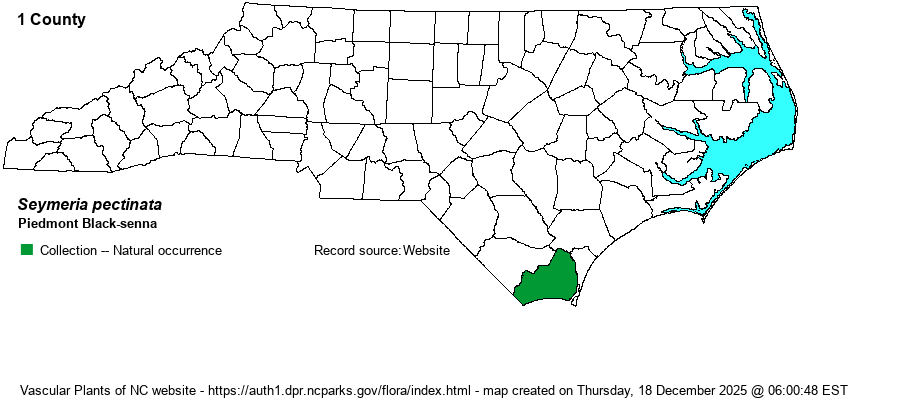| Author | Pursh | |
| Distribution | Of historical occurrence, collected in 1950 in Brunswick County. This represents the northeastern edge of the species' range.
This is a Southern species, quite scarce north of FL. It ranges from southeastern NC to southern FL and west to MS.
| |
| Abundance | Formerly extremely rare, but now historical (SH State Rank), and may well be extirpated (SX). This is a State Special Concern - Historical species, though technically the listing is for the subspecies in NC. | |
| Habitat | This species is found in slightly drier habitats than is S. cassioides in its range. It was found in NC in dry Longleaf Pine (Pinus palustris) habitats, such as pine/scrub oak sandhills and drier pine flatwoods. | |
| Phenology | Blooms from July to October, and fruits shortly flowering. | |
| Identification | This species is rather similar to S. cassioides, in that it is bushy-looking, with spreading branches, growing up to 2 feet tall. However, in this species the pinnately divided leaves have lanceolate segments as opposed to linear ones. Also, the yellow flowers do not have a dark red band around the base of the 5 petals. | |
| Taxonomic Comments | The subspecies found in the Carolinas is the nominate one -- S. pectinata ssp. pectinata.
| |
| Other Common Name(s) | Comb Seymeria | |
| State Rank | SH | |
| Global Rank | G4G5 | |
| State Status | [SC-H] | |
| US Status | | |
| USACE-agcp | | |
| USACE-emp | | |

